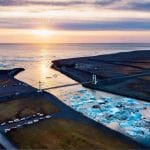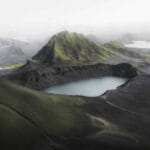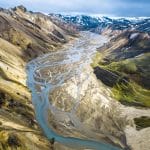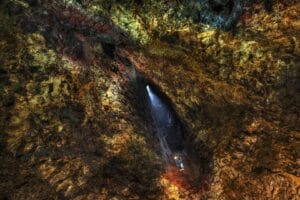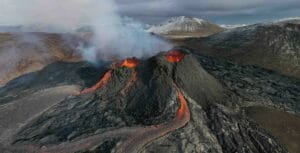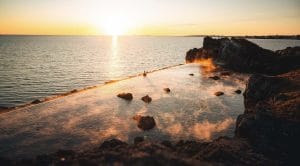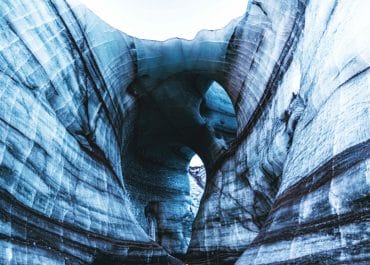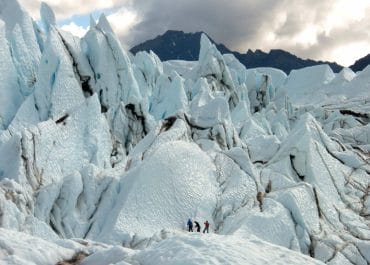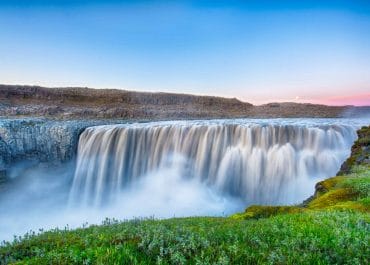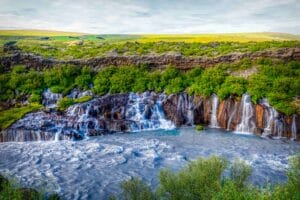Spotting a drone flying in the air now and then is not something surprising to anyone these days. Some people do it for the fun that it brings in the picture, some do it because they have a knack for new technologies, gadget, and the brand-new features that they get to explore while others are one step ahead and introducing their little inventions and modifications and come out to test them. Drones used to be a rare sight at some point in time in the past but nowadays they are used for almost everything. Several people even use them for transporting goods and services either out of boredom or just to be a bit more leisurely than usual. To think that once a piece of top-grade military equipment now has a version that can be used in the day to day living, it is quite a happy surprise for all.
While all the above-mentioned uses of a drone are quite creative, photo and videography remain to be the main use of a drone. Picturesque locations like Iceland get a lot of drone spots, so much so that people consider them a pretty normal thing like cameras. The leaps that technology has taken over the past few years has made it possible to use drones to capture high definition 4K images of various landscapes. And most people would agree that a place like Iceland deserves nothing less than 4K images. There is no other way to capture the beauty of this magnitude after all, right?
The best about drone photography is the possibilities that it brings in the picture. Photographers can capture shots from angles that are impossible to get to otherwise. Locations that are off limit to travel personally, mainly because they are simply not accessible to humans can be easily photographed using a drone. To put it simply, drones have revolutionized landscape photography in manners that were not possible before and have efficiently lowered the difference between photos taken by amateur photographers and experts.

The New Drones and the Industry
Recreational drones have come a long way both in terms of features and design. The new drones that are used for leisurely things are lighter, smarter, and extremely easy to port. Moreover, the prices of these photography wizards have fallen quite a lot which has increased their availability for the general public. And given the forever-shaping nature of the photography world, it is no surprise that people are more and more inclined towards using drones to capture beautiful pictures on their travels.
Drone Photography in Iceland
As evident, Iceland is one of the top locations where drone photography is extremely famous and well-practiced and for all good reasons too. There is no shortage of dramatic landscapes in Iceland, from terrific waterfalls to volcanoes, and the highlands, there are plenty of places you can not reach but your drone will. Imagine having aerial footage of the Goðafoss or Dettifoss waterfall in your album dedicated to the vacation, feels exciting, right?
Further supporting this trend, Iceland has various shops of its own where you can easily find drones to capture some gorgeous snaps and clips. The hardware store ELKO is one of the most popular and reliable places to get drones in Iceland. The pieces can range anywhere between 5,000 ISK to 333,000 ISK. Many people prefer to bring their drones from home as you can usually find them cheaper online. There are several stores in the capital city that can also help you with drone accessories like chargers and batteries if you happen to have left them at home when packing for the vacation. Keep in mind that if you are someone who has never used a drone before or even a remote-controlled airplane/helicopter then flying and controlling your drone may be hard. Ensure that you have enough time to practice before you decide to purchase one on impulse because vacation days are never infinite.
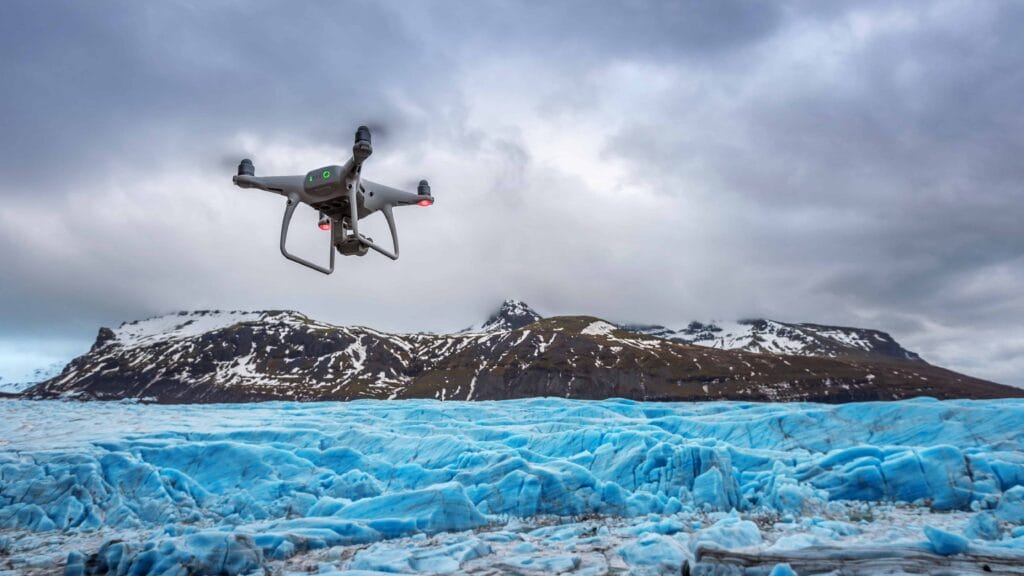
Drone Laws and Regulations in Iceland
Lack of laws and regulation often leads to unfortunate accidents even when something like photography is the topic of discussion. Some people use them for things like transporting groceries in the times of a lockdown while some others have used them to smuggle drugs, make small pets levitate just for fun, or spied on people. More serious misuses of drones include stealing confidential information, compromising privacy, etc.
Although, the rules set by the legislation of Iceland have more to do with the flying rules near properties and speed regulations. Flying drones without any rules whatsoever can be dangerous and hence the legislation of Iceland has chosen to form some must-follow rules if you are planning to indulge in some drone flying sessions in the country.
Rules for Flying Drones in Iceland – For Leisurely Purposes
- Your drone must be marked with the pilot’s name (the owner), address, and phone number.
- Only drones weighing 3 kilograms (6.61 pounds) or less are permitted to be flown in urban areas. Keep the drones at a distance of 50 meters (164 feet) from all the buildings in an urban area. Reykjavik city center does not allow people to fly a drone above the building height due to high air traffic.
- Drone weighing 25 (55 pounds) kilograms or less are permitted to be flown in rural areas. Maintain a distance of 15 meters (492 feet) from buildings in rural areas.
- Insurance is required for drones weighing 20 kilograms (44 pounds) or more.
- Flying over 120 meters (394 feet) above the ground or sea level is not permissible.
- Flying over crowds is not advised.
- Flying a drone 2 kilometers (1.24 miles) radius of any international airports is prohibited.
- Do not fly within 1.5 kilometers (0.93 miles) of any domestic airports. It is also advisable to follow the same when private helipads are concerned. It also applies to national parks, hospitals, state institutes, and power plants.
- All pilots must have their drones in a direct line of sight when flying.
- Your drone fly must not interfere with air traffic. The same applies to land vehicles and ships.
- Drone pilots are responsible for any and every damage caused by their drones.
- Every pilot is expected to check the local drone flying rule without prompting.
- Local privacy rules and policies should also be adhered to at all times.
In all seriousness, not following even one of these rules will not have you charged with a hefty fine but can also cause a very serious accident. You should also note that rules and regulations concerning drone flying are prone to change quite frequently depending on the need of the hours. So, always make it a point to check the circular put out by the Icelandic Transport Authority to find out the current ones.
Moreover, Iceland takes drone laws very seriously since there have been a few incidents where tourists flying drones caused a bit of havoc. Once a rescue operation almost failed and other times someone was caught peeking in living rooms of people using a drone. You will find that Icelandic media is extra cautious about any and every news they can get since it is a small country and the safest one of all so, things like this are a rare occurrence. So, if you do not want an article written for you for breaking one of these rules, it is better to strictly adhere to them.
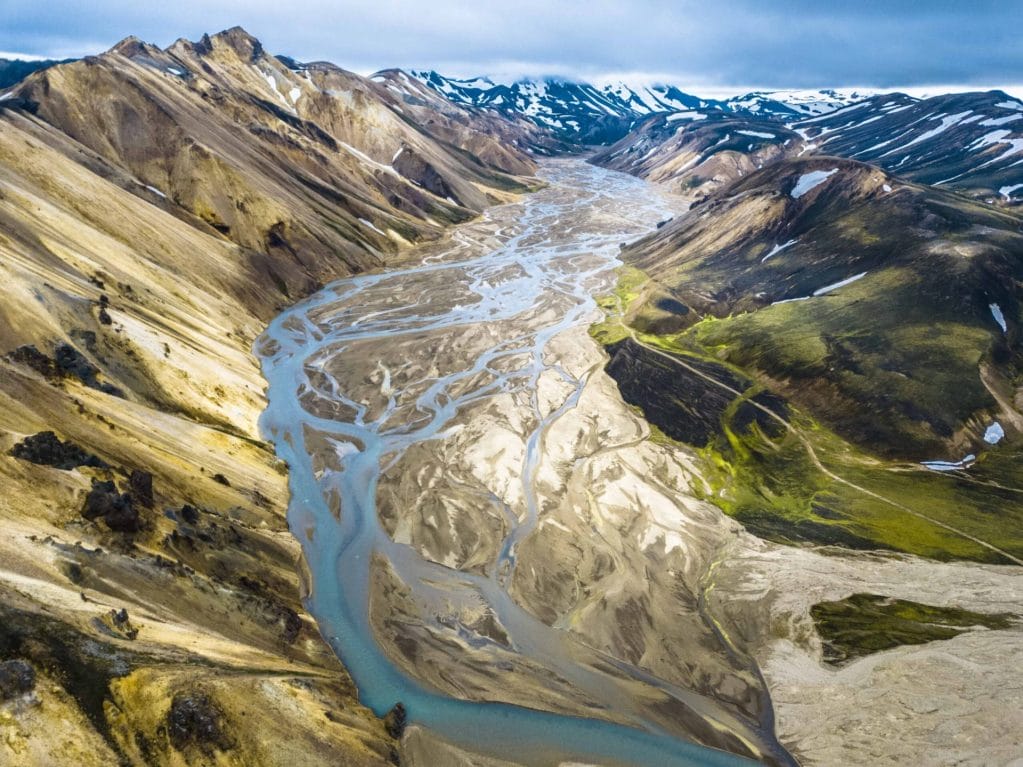
Bringing in Your Own Device
Airplane security checks are no jokes, we all know that. So, this particular notion may raise a lot of questions about bringing your drone on vacation. You may be wondering about the check-ins, carry-on rules, what bag should you use to carry the drone, baggage loss insurance, etc. Let’s tackles some of these questions.
Things to Pay Attention to in Airline Guidelines
- Items Permissible by Airlines: Every airline has a different set of rules about carrying a drone with you. Almost all airlines have a list of restricted and prohibited items. The simplest way to find out whether it is okay to bring a drone is by going through the list.
- The “Wh” Rule: If you have done a little bit of research on the topic, you may have come across the word “Wh”. This word is an abbreviation for watt-hours and it applies to the battery of your drone. Almost all airlines allow batteries which are under 100 Wh on the aircraft. Some airlines may allow batteries which are between100Wh and 160Wh but not above that. You must identify the watt-hour capacity of the battery of your drone which is calculated by multiplying amp-hours to voltage.
- Number of Batteries: Yes, there is a finite number of batteries that you can take with you and it changes with every airline. Most airlines also allow you to keep batteries under 100Wh in the carry on or hold luggage if they are taken out and separated from the drone. Some airlines will allow you to take 1 or 2 lithium batteries between 100Wh and 160Wh. You may have to call ahead of time to get approval though.
Make sure that you check the policies of your local airport as well as the one you plan to land on beforehand.
Carrying the Drones
Needless to say, drones are very fragile – the technology, the body, small parts, everything about a drone is very delicate. If your drone or the box exceeds a certain measurement, you will not be able to carry it in the hand luggage and it will go through quite a few tosses and turns in the cargo space, especially if you have connecting flights lined up. Drones like DJI Phantom, DJI Mini, and DJI Mavic are small and portable enough to have brought on the plane with you but bigger ones like DJI Inspire and DJI Matrice will have to be shipped separately to the destination.
So, it is smart and highly recommended to always carry your drone in a sturdy bag made just to carry drones. A specialized bag for drones will have plenty of secure pockets and sections to keep the drone safe from damages and will hold all the accompanying accessories ideally as well. Go with hardshell bags to eliminate every doubt you have about your being damaged.
A separate bag for your batteries is also necessary because, as explained above, you can not carry them with your drone. Some airlines may even confiscate the batteries if they are not properly packed in bags. Lipo battery bags are perfect for this job. They are sealed and hence makes it safe to carry lithium batteries on a plane.
Insurance
Airlines, generally, are liable for baggage insurance of only $1000. So, if you are carrying a drone that costs almost half the insurance and the airline happens to lose a part or all of the baggage containing the drone, then it will be a huge loss. So, consider carrying a drone that you can take with you on the plane so that the possibility of incurring such a loss is low.
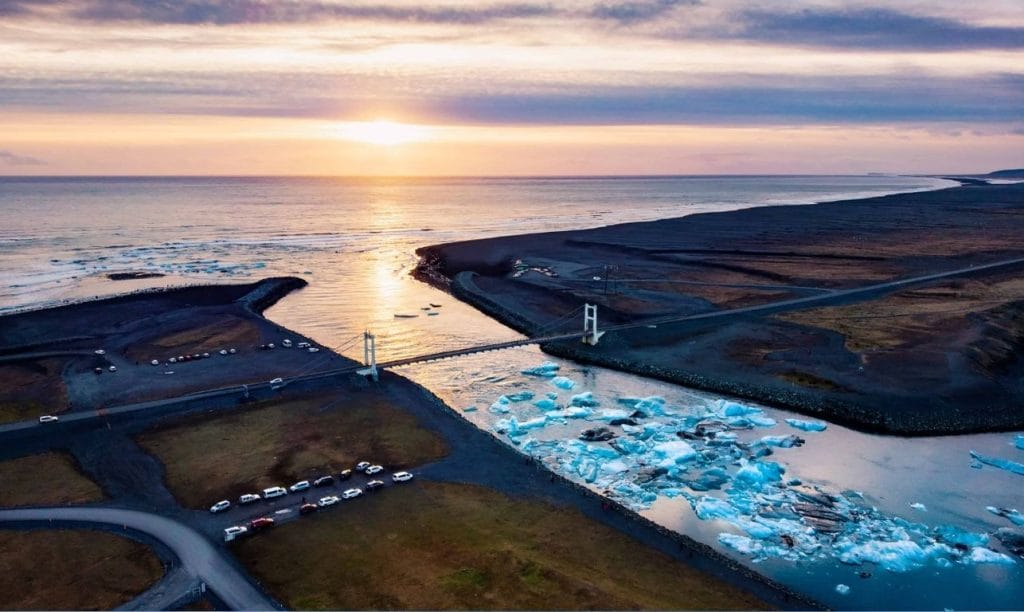
Top Places for Drone Photography in Iceland
From Arnarfjörður fjord and Rauðisandur beach in the Westfjords to the Þórsmörk valley in the highlands, there are several locations where you can let your drone take a beautiful long flight. Iceland is creeping with extremely beautiful destinations all over and except for a few places, you can let your drone fly around care-free. Some of the most impressive places to try out the performance of your drone are waterfalls. Take Kvernufoss waterfall for example. It is located right beside Skogar. You can record the waterfall cascading down in the canyon along with the waterfall. The whole scenery is every bit deserving of being caught on a drone camera.
Other great places for drone flying include the Snæfellsnes peninsula. There are basalt columns, mineral springs, churches, caves, small beautiful villages, Kirkjufell mountain, and many other beautiful attractions. Sólheimajökull Glacier is one of the very few glaciers where you can fly a drone for leisurely purposes so ensure that you do not miss even a single moment when you finally get the opportunity.
Steer Clear of These Places
The National Parks: As of 2016, it is prohibited to fly a drone in the national park of Iceland. As sad as this decision is, it is important to do to preserve the tranquility of the place as well as to protect the wildlife of the national parks. There is a total of three national parks in Iceland which include Vatnajökull National Park, Snæfellsjökull National Park, and Þingvellir National Park. Several complaints were also filed by tourists who were often disturbed by the buzzing sound of low-flying drones which ultimately led to the ban of flying recreational drones.
Note that these parks accommodate huge areas and hence you need to be careful to not step inside the prohibited areas when flying your drone. Several other places are also considered a part of these parks. For example, both Skaftafell Nature Reserve and Jökulsárlón Glacier Lagoon are a part of Vatnajökull National Park which makes them off-limits for drone flying.
Other locations where flying a drone has recently been prohibited are the Gullfoss, Seljalandsfoss, Skógafoss, and Reynisfjara Beach. If you want to identify the places where it is banned to fly a drone, simply try and look for a yellow prohibited sign. The sign will simply have a picture of a drone with a red line passing through it. Some places even have a simple “Drones Are Forbidden” sign.
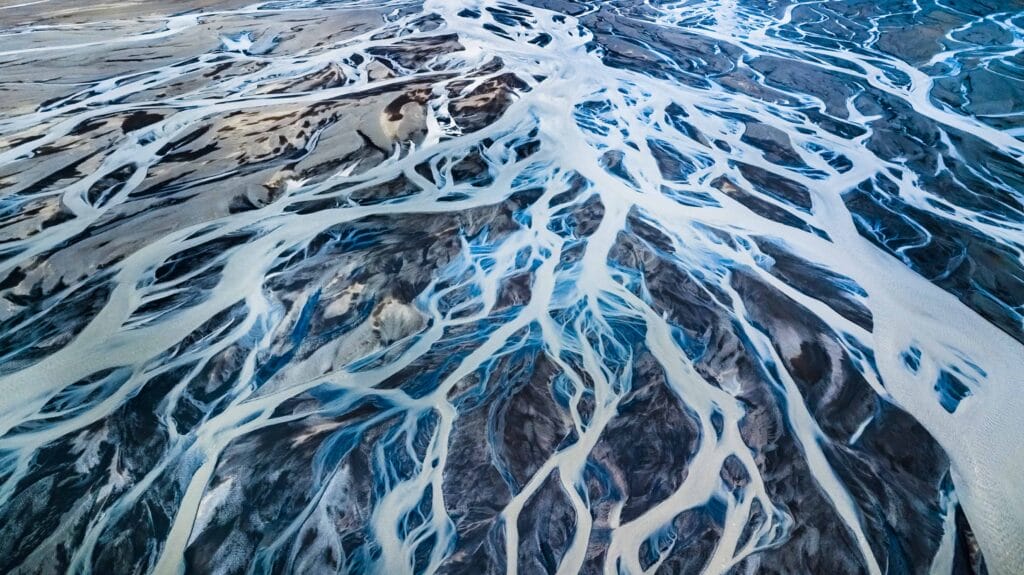
Some Tips for a Perfect Drone Picture
- Scout for Ideal Locations: The best way to get the most out of your drone flying session is by scouting and finding the ideal location. Many places in Iceland restricts drone flying brings in the research factor. You can either search online or ask around among the locals for a better understanding of the ideal location to take a flight. Let’s say you have a few names with you now but you are still unsure whether you will like the surroundings for the flight or not. In that case, it is best to scout the locations you have in mind using google maps 3D. This function gives you quite a realistic idea of how the landscape would look in your drone’s camera.
- Keep A Check on The Weather: It is no secret that Iceland has ever-changing weather and you never know when it will start raining even if you are experiencing the sunniest day of your life on a particular day. Rumbunctious weather plus drone plus camera do not spell ‘fantastic footage’. Not only will you find your self stuck in a potentially dangerous situation but will also have your drone damaged by water.
There is a set of perfect weather conditions that you can look out for to find the right time to take off. A clear day with a little bit of wind is perfect to have a drone day. Be mindful of the winds that are too strong as there can be times when winds are too strong to even let you take off or land. That being said, challenging weather conditions often result in gorgeous photographs and clips. Just make sure that the risk you take in terms of strong winds, rain, and snow is well-calculated.
- Shooting Plan: A shoot that is planned always turns out to be better than the one that you do on an impulse or just for the fun of it. If the main purpose for you behind flying a drone is to get an amazing photograph then, always plan your shoot. Along with scouting locations, you will need the ideal camera settings, the perfect lights, and an accurate idea of the field that you are going to capture. There are several apps available on smartphones that let you see a version of your drone shot. You can adjust the horizon and make other changes to identify the exact right spot where you can get the ideal shot. While you are at it, throwing in some pro photographer moves won’t hurt either. Remember that horizons play an important role in clicking photographs.
- About the Height: It may seem like a good idea to fly as high as you can when capturing pictures or making a drone clip but it is not. The higher your drone is, the more area it will cover which can make the picture look cluttered. More area does not translate to good pictures here. You need to experiment a little bit with the frame and the height to find the right spot.
Now that you know everything you need to know about drone flying in Iceland, there is only adventure that waits for you and your drone in Iceland.



